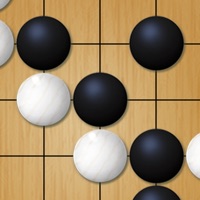
This is again a trade off between complexity and performance.
Master of gomoku code#
In the second case the code and the search are more complex, but more options are explored and a wider range of attacks can be found. In the first case, the code is simpler to develop and the search is faster to run. the S3s) or it can exploit both the T2 and the T3 patterns (or a subset of the T2 and T3). The solver can exploit only the T2 patterns (i.e. To clarify the latter point consider, for example, the TSS. As a general comment note that for the endgame solvers that are based on the PX threats, like BMM and TSS, one can produce different solvers by varying the set of threats used.
Master of gomoku full#
Moreover one has to check that PY cannot achieve a faster victory when the moves yielding to the attack are played in the full game. However, the attack needs to be confirmed: first by checking that the threats are compatible and next by checking that the defences are disjoint. Even better, this is a potential victory for PX, because the attack is on a PX board. During the exploration, the threat triggers are tracked because if two threats with the same trigger are detected, based on the Combination Attack Lemma, these are potentially an attack. And if any new PX threat, not belonging to the initial set, has been produced, the exploration is pushed forward, by playing all the newly created threats, until a board with no new threats is reached. Then the defences of the attack are filled with PY stones. Each of the threats is played by PX, giving rise to a set of PY boards where at least an attack is present. The TSS is started from a board where a set of one or more PX threats has been identified. The edges represent the possible moves, produced by the moves generation procedure. If a node is a leaf, its value is obtained by running the board evaluation procedure. Their value is the Min of the values of their childs. The squares are minimising nodes, corresponding to PY boards. Their value is the Max of the values of their childs. The circles are maximising nodes, corresponding to PX boards.

In Alphago the board evaluation is highly complex and is performed by means of a deep Convolutional Neural Network (CNN), trained on a large number of games by means of reinforcement learning.
Master of gomoku professional#
, was the first program capable of beating a professional human player. Recently, the other side of the trade off gained momentum, thanks to the success of an artificial player for the game of Go, which is another board game, sharing some similarities with Gomoku. Typically, in the Minimax search one tries to keep the board evaluation and the move generation procedures simple, in order to allow a deep search. As we have seen, in an artificial player a trade off exists between the complexity of the board evaluation and the depth of the search.


 0 kommentar(er)
0 kommentar(er)
